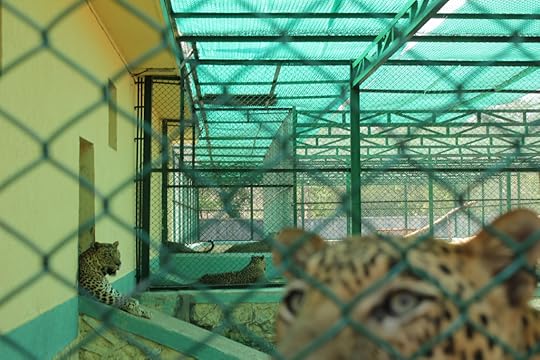For India’s Captive Leopards: Life Behind Bars

Leopard detention camp, in Mumbai (Photo: Richard Conniff)
by Richard Conniff/Yale Environment 360
When an escaped leopard tackled a man at poolside on a school campus in the southern Indian city of Bangalore early this year, the video went viral. The victim was one of the wildlife managers trying to recapture the animal. His colleagues finally managed to tranquilize it late that night and return it to a nearby zoo that was serving as a rescue center for a population of 16 wild-caught leopards. A week later, the leopard squeezed between the bars of another cage and escaped again, this time for good.
All the news and social media attention focused on the attack — and none on the underlying dynamic. But that dynamic affects much of India. Even as leopards have vanished in recent decades from vast swaths of Africa and Asia, the leopard population appears to be increasing in this nation of 1.2 billion people. The leopards are adept at living unnoticed even amid astonishingly high human population densities. But conflicts inevitably occur. Enraged farmers sometimes kill the leopards. But trapping is the more common response, and religious and animal rights objections have made euthanasia for unwanted animals unthinkable.
Thus anywhere from 100 to several hundred wild-caught leopards nationwide have ended up being trapped and locked away for life, in facilities that often cannot provide proper security, space, veterinary care, or feeding.
In the Bangalore incident, the attack victim, leopard biologist Sanjay Gubbi, managed to fight off the leopard and stagger away with claw wounds on his right arm and torso, requiring 55 stitches. Two others working on the bungled re-capture effort also suffered minor injuries. The leopard, an eight-year-old male, had escaped in the first place (and later re-escaped), according to a manager at Bannerghatta Biological Park, because it was being kept there in cages designed for tigers or lions, not leopards.
For lack of space, other rescue centers and zoos have kept leopards for months at a time in the box traps that were used to catch them. Until recently, one national park even put leopards on display …
To read the full story, click here.





